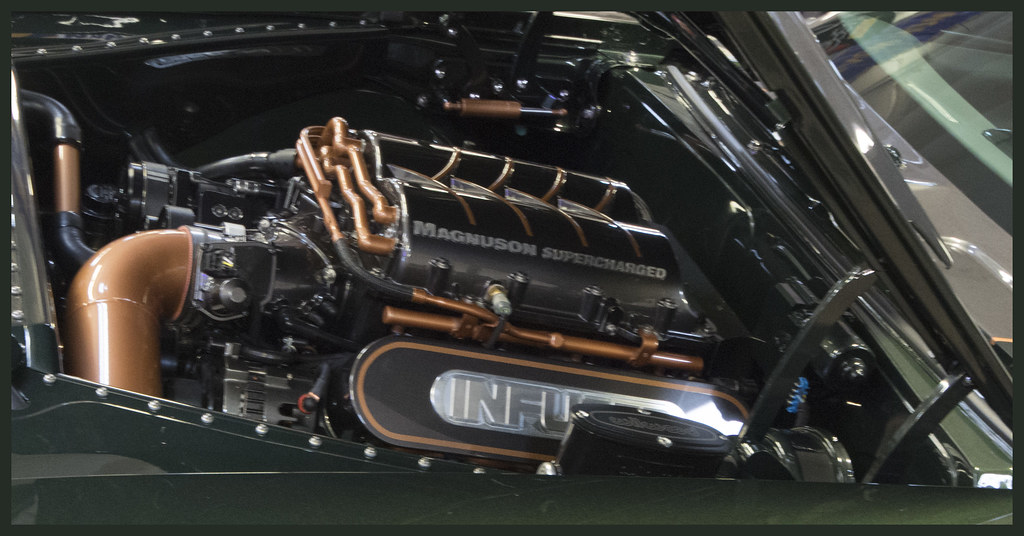The automotive industry has made incredible strides over the past few decades, driven by advanced engineering and a deep commitment to protecting lives on the road. Safety features have become paramount in today’s rapidly evolving automotive landscape, making it essential for consumers to consider them when purchasing a vehicle. The National Highway Traffic Safety Administration (NHTSA) has played a pivotal role in establishing and enforcing safety standards, ensuring that the vehicles we drive are equipped with the latest safety technologies. Looking back at car safety reveals a significant change; electronic stability control and airbags sounded like science fiction just a few decades ago. These days, these features are essential for both driver and passenger safety as well as standard. We’ll examine how these contemporary automobile safety features function, why they’re crucial, and why you shouldn’t compromise on them when buying a new car. Knowing these aspects is crucial to make an informed choice, regardless of whether you prioritize safety above all else or are a family-oriented purchaser.

Lights
First of all, let’s talk about lights—yes, the unsung heroes of vehicle safety. Every car on the road needs to have three types of lights: brake lights, turn indicators, and headlights. These lights don’t just serve to be seen; they are vital for communication on the road. If you’re driving at night or in inclement weather, proper visibility is crucial, and that’s where these lights come into play. Utilizing them not only improves your visibility but enhances the overall safety of your driving experience. Nowadays, fog lamps and Daytime Running Lights (DRLs) have become commonplace. DRLs are particularly interesting as they remain illuminated throughout the day, enhancing visibility and drastically reducing the risk of collisions. Research has shown that DRLs improve drivers’ peripheral perception of surrounding vehicles, helping them gauge distance more accurately.
The advancements in headlamp technology can’t go unnoticed either. Vehicle manufacturers are progressively leaning towards high-intensity discharge (HID) technology, which emits a brighter light than traditional halogen bulbs. This evolution doesn’t stop there; LED headlights are now making waves with their efficiency and adaptability. Unlike their halogen counterparts, LED systems can be finely tuned to produce smarter beam patterns that adjust based on road conditions. Imagine driving at night with the full beam on, without blinding oncoming drivers! Some LED systems can direct light away from approaching vehicles while maintaining brightness on your side of the road. This kind of innovation is not just impressive but a vital component of modern automotive safety, enhancing visibility and reducing the risk of accidents.
You might not think of your windshield wipers as a safety feature, but they certainly are! Invented by Mary Anderson in 1903, these devices have evolved significantly. Today, many models come equipped with advanced features like automatic activation upon detecting moisture. This seemingly simple addition can vastly improve visibility during rain, ensuring you maintain control of your vehicle in adverse weather conditions. It’s a testament to how safety technology can be both innovative and practical.
Crash protection
As we step into the realm of crash protection, seatbelts are arguably the most crucial feature. Introduced as a standard feature decades ago, the three-point seatbelt has saved countless lives. It restrains occupants across the lap and shoulder, and modern advancements include pretensioners that tighten the belt during a crash, preventing slack. The impact of such features is staggering; they have reduced the risk of injury by up to 65%. Similarly, airbags have evolved from their inception in the 1950s. Though the early models saved lives, they posed risks of injury during deployment. Today, cars are equipped with multiple airbags, including side-curtain and knee airbags, offering comprehensive protection to occupants in various crash scenarios.
Then we have electronic stability control (ESC), a game-changer in maintaining vehicle control during extreme conditions. Since it became mandatory in new vehicles in 2011, ESC has become a standard safety measure. It utilizes automatic braking technology, ensuring drivers can maintain control in slippery conditions or emergency maneuvers. Coupled with anti-lock braking systems (ABS), these features drastically reduce the risk of spin-outs and the potential for collisions.
While the journey through automotive safety features may seem overwhelming, it is essential to prioritize these technologies when considering a new vehicle. The NHTSA’s ongoing commitment to upgrading safety standards and educating consumers about the latest innovations serves as a critical resource for us all. It’s a promise that the vehicles we drive are not just machines but are increasingly designed to protect lives. As we await further advancements in safety technology, let’s embrace the innovations available today that are saving lives and making our roads safer for everyone. In the era of modern automotive safety, understanding and valuing these essential features is not just wise; it’s life-saving.

In this section, we will dive deeper into the must-have safety technologies that every modern car should possess. As automotive technology continues to advance, the importance of these features increases, transforming the very definition of safety on the road.
Airbags
One of the most significant developments in vehicle safety has been in the domain of airbags. Since their introduction, airbags have evolved from a single frontal deployment system to a sophisticated network of protective devices that play a crucial role in safeguarding occupants. As of 1998, federal mandates required all new vehicles to be equipped with front airbags, but most manufacturers have gone above and beyond this requirement, offering side, curtain, knee, and even rear-window airbags. These advancements contribute to significantly reducing the risk of injury during accidents. For instance, frontal airbags can lower the risk of death by around 30%, while side airbags can reduce the risk of injury between 37% and 52%, depending on the vehicle type. The evolution of airbags underscores the importance of continuous innovation in automotive safety.
Moreover, the innovative placement of airbags enhances their effectiveness. Modern vehicles are designed with a more holistic approach to crash protection. They’ve adapted to include airbags in areas such as the far-side passenger seat and inflatable seat belts, ensuring that all passengers, regardless of position, are protected.
Tire pressure monitoring systems
Tire pressure monitoring systems (TPMS) are another essential safety feature that every car should have. This system constantly monitors tire pressure and alerts drivers to any significant changes. The importance of maintaining proper tire pressure cannot be overstated; under-inflated tires can cause poor handling, reduced fuel efficiency, and even blowouts at high speeds. Having an effective TPMS not only enhances safety but also contributes to better fuel economy, making it a win-win for drivers. Ensuring your vehicle is equipped with TPMS is a simple yet effective way to enhance overall driving safety.
Backup cameras
When it comes to visibility and awareness, the implementation of backup cameras has been revolutionary. As of 2018, backup cameras are mandatory in all new cars, providing drivers with a clearer view of what lies behind them. This feature is particularly beneficial for preventing backover accidents, which can often involve pedestrians or small children who may not be visible through traditional mirrors. Backup cameras enhance awareness and improve confidence when reversing, as they provide a wider field of vision. Some systems even include sensors that alert drivers to objects in their path and can automatically apply the brakes if a collision is imminent.
Electronic Stability Control
Electronic Stability Control (ESC) is another critical feature that has become standard in all vehicles manufactured after 2011. This technology assists drivers in maintaining control when they encounter slippery roads or when making sudden maneuvers. By automatically applying brakes to individual wheels, ESC helps to prevent skidding and loss of control, effectively reducing the risk of accidents caused by oversteering or understeering. It’s estimated that ESC has significantly reduced crash rates, making it an indispensable feature in modern cars.
As we explore the world of driver assistance technologies, we find that many capabilities are now available that enhance safety and make driving easier. Forward collision warning systems, for example, utilize sensors to monitor the distance and speed of vehicles ahead. If a potential collision is detected, the system alerts the driver with visual and auditory warnings. This proactive approach can give drivers crucial extra seconds to react and avoid accidents.
Automatic emergency braking
Automatic emergency braking (AEB) is another life-saving feature that has gained traction in recent years. This system can detect an impending collision and, if the driver fails to respond, will automatically apply the brakes. The integration of AEB into new vehicles has shown promising results, as it can prevent accidents or significantly reduce their severity, thereby saving lives and reducing injuries.

Lane departure warning systems
Lane departure warning systems add another layer of protection, particularly for distracted or fatigued drivers. Utilizing cameras to monitor lane markings, these systems will alert drivers if they unintentionally drift outside of their lane without signaling. Some advanced systems can even provide corrective steering assistance, helping to keep the vehicle centered in its lane. This feature not only aids in preventing collisions but also fosters safer driving habits among drivers.
Adaptive cruise control
Adaptive cruise control (ACC) is a more advanced form of traditional cruise control that allows drivers to maintain a set speed while also adjusting to the speed of the vehicle in front. By using radar or cameras to monitor traffic, ACC can automatically slow down or speed up, maintaining a safe following distance. This technology not only increases convenience on long drives but also reduces the risk of rear-end collisions, making it a valuable addition to any modern car.
Blind spot monitoring systems
Blind spot monitoring systems are gaining prominence as essential safety features in today’s vehicles. These systems utilize sensors to detect vehicles in the driver’s blind spots and alert the driver when it’s unsafe to change lanes. This feature is especially helpful in urban environments where tight spaces and heavy traffic can create unexpected dangers. With such systems in place, drivers can feel more secure when merging or changing lanes, reducing the likelihood of accidents. The integration of blind spot monitoring systems into modern vehicles represents a significant step forward in automotive safety.
The technological advancements in automotive safety don’t stop at individual features; they are part of a broader trend toward the integration of all these systems into a cohesive network that enhances overall safety. Manufacturers are increasingly developing vehicles that use data from multiple safety systems to provide a comprehensive view of the driving environment. This holistic approach to safety is paving the way for vehicles that can predict potential hazards and assist drivers in real-time, creating a safer driving experience.
As we look ahead to the future of automotive safety, we can expect further innovations to emerge. The movement towards fully autonomous vehicles is a testament to the automotive industry’s commitment to safety. While full autonomy may still be some years away, the driver assistance technologies available today are a significant step in that direction. These systems serve as essential components in enhancing driver awareness and vehicle control, ultimately striving towards a future where accidents become a thing of the past.
While we continue to push for advancements in automotive safety, let’s embrace the technologies that are revolutionizing the industry and making the roads safer for everyone. With the right features, driving can be an experience defined by confidence, security, and peace of mind. Modern cars are required to have far more safety features than just the bare minimum. Airbags, tire pressure monitoring systems, backup cameras, electronic stability control, and various driver assistance technologies are now integral to ensuring a safe driving experience. As consumers, it’s crucial to prioritize these features when considering a new vehicle, ensuring that safety remains at the forefront of our purchasing decisions.
Related posts:
What Car Safety Features Are Required By Law?





